· microprocessors · 12 min read
The Ultimate PIC Development Boards Comparison (2023)
Discover the Best PIC Development Boards for Every Project! Our Top Picks, Reviewed.
Welcome to our comprehensive guide to the best PIC development boards in the market. Whether you're a seasoned developer or just starting out, choosing the right development board is crucial for your project's success. We've done the research to bring you the top PIC development boards that offer the best performance, features, and value for money. Dive in to find the perfect board for your next project!
Overview

PROS
- Empowering embedded system development with Microchip's flagship PIC16F877A microcontroller.
- Providing a seamless development environment with an intuitive USB interface for hassle-free programming.
CONS
- May require additional components for extended functionality depending on the project's requirements.
- Comprehensive documentation might be limited for absolute beginners.
Gearing up for embedded system development? Look no further than our PIC MCU Development Mini System. At its core lies the renowned Microchip PIC16F877A microcontroller, renowned for its versatility and efficiency. This board empowers you to dive into the world of microcontrollers with ease, thanks to its user-friendly USB interface that streamlines the programming process.
With this development board, you'll be able to explore the capabilities of the PIC16F877A microcontroller and bring your embedded system visions to life. However, it's worth noting that for more complex projects, you might need to incorporate additional components. Additionally, if you're a complete newbie to the microcontroller realm, you may encounter some limitations in terms of in-depth documentation. Nevertheless, this board remains an excellent starting point for those seeking to delve into the fascinating world of embedded system development.

PROS
- Empowers embedded system development with the ubiquitous Pic16F877 microcontroller
- Facilitates seamless data transfer via the integrated RS232 interface
- Streamlines learning through hands-on experimentation and practical projects
CONS
- May require additional components for advanced applications
- Documentation could be enhanced for beginners
Unleash your embedded systems potential with the Learning Board, a comprehensive development platform featuring the industry-standard Pic16F877 microcontroller. This remarkable board empowers you to explore the intricate world of electronics through hands-on projects and practical implementations.
The Learning Board boasts an intuitive design that seamlessly integrates with the Pic16F877 microcontroller, renowned for its versatility and wide adoption. Its onboard RS232 interface bridges the gap between your board and the digital realm, ensuring effortless data transfer and communication. Whether you're a seasoned pro or just starting your embedded systems journey, this board is meticulously crafted to accommodate your learning needs.

PROS
- Empower your microcontroller projects with the PIC16F877A Microcontroller, renowned for its versatility and performance.
- Seamlessly interface with peripherals through the integrated RS232 interface, enabling efficient communication and data transfer.
- Accelerate your development process with a user-friendly design that simplifies prototyping and debugging.
- Expand your project's capabilities with a comprehensive set of I/O pins, providing flexibility and customization options.
CONS
- May require additional hardware components depending on the specific project requirements.
Embark on a seamless microcontroller development journey with our meticulously designed PIC development board. At the heart of this board lies the powerful PIC16F877A microcontroller, renowned for its reliability and versatility. The integrated RS232 interface opens up a world of possibilities, allowing for effortless communication and data exchange with external devices. The board's intuitive design ensures a smooth and efficient development process, empowering you to bring your projects to life with ease. Its comprehensive I/O pin configuration grants you the flexibility to integrate a wide range of peripherals, enabling you to customize your projects to suit your specific needs. Whether you're a seasoned developer or just starting your microcontroller adventure, this development board is an indispensable tool that will elevate your projects to new heights.
As you delve into the world of microcontroller development, this board provides a supportive environment that nurtures your creativity and innovation. The user-friendly layout and comprehensive documentation guide you through every step of the development process, ensuring a smooth and productive experience. Experience the joy of bringing your microcontroller visions to life with our state-of-the-art development board, the perfect companion for your next microcontroller project.

PROS
- Versatile and Comprehensive Learning Platform for PIC Microcontrollers.
- Integrated RS232 Interface Facilitates Seamless Communication.
CONS
- Additional Components May Be Required for Specific Applications.
- Documentation Could Be More Extensive for Beginners.
The PIC16F877A microcontroller development board offers an exceptional platform for learning and prototyping embedded systems. With its comprehensive set of features and easy-to-use interface, this board empowers developers of all skill levels to explore the world of PIC microcontrollers.
One of the key highlights of this development board is the integration of an RS232 interface. This vital feature allows for seamless communication between the board and a computer, enabling debugging, programming, and data transfer with ease. This makes the development process more efficient and convenient.
While the PIC16F877A development board is incredibly versatile, it's important to note that additional components may be required depending on the complexity of your project. Additionally, while the documentation provided is generally adequate, some users may find it could be more extensive for beginners just starting with PIC microcontrollers.

PROS
- Facilitates comprehensive exploration of PIC16F877A microcontroller capabilities.
- RS232 interface enables seamless communication and data transfer.
CONS
- May require additional components for advanced projects.
- Instructions might be limited for absolute beginners.
Embark on an engaging learning odyssey with the PIC16F877A Microcontroller Learning Development Board. Tailored for electronics enthusiasts and aspiring programmers, this board unlocks the gateway to mastering the PIC16F877A microcontroller. Its intuitive design empowers you to delve into the intricacies of embedded systems programming and unravel the potential of this versatile chip.
The board's RS232 interface adds an invaluable dimension to your learning experience. Effortlessly communicate with your microcontroller, exchange data, and witness the practical applications of your programming endeavors in real-time. This interactive aspect brings the world of embedded systems to life, fostering a deeper understanding and appreciation for the subject matter.

PROS
- Compatible with PIC16F877A microcontroller, empowering diverse development options.
- Integrated MAX3232 chip facilitates seamless RS232 communication, enhancing connectivity.
CONS
- May require additional components or accessories depending on specific project requirements.
- Suitable for hobbyists and enthusiasts with basic electronics knowledge.
This USB PIC development board emerges as an invaluable tool for electronics enthusiasts and programmers seeking to harness the capabilities of the PIC16F877A microcontroller. Its compact size and user-friendly design make it an accessible platform for experimenting with various electronic projects. The board's compatibility with the PIC16F877A opens up a world of possibilities, allowing users to explore the microcontroller's features and implement custom designs with ease.
The integration of the MAX3232 chip on this development board stands as a significant advantage, enabling reliable RS232 communication. This feature extends the board's functionality, enabling easy interfacing with external devices and facilitating data exchange. Whether you're a seasoned electronics professional or just starting your journey into the world of microcontrollers, this USB PIC development board offers a comprehensive solution for your programming and development needs.

PROS
- Versatile Development Platform for PIC Microcontrollers
- Facilitates Programming through ICD2 Support for PICKIT 2 and PICKIT3
- Enhances Development Efficiency with Minimum System Board Functionality
CONS
- May require additional components for specific project needs
- Documentation availability could be improved for some users
Elevate your PIC development experience with our comprehensive PIC Microcontroller/Minimum System Board/Development Board! This versatile solution empowers you to explore, experiment, and innovate with ease. Its universal programmer seat supports ICD2 compatibility, allowing you to seamlessly program your PICKIT 2 and PICKIT3 devices.
Beyond programming, this board serves as a complete development platform. The integrated minimum system board functionality provides essential components for your project, enabling you to focus on your core application development. Whether you're a seasoned engineer or a budding hobbyist, this board is meticulously crafted to accelerate your progress and maximize your creativity.

PROS
- Dual-core ARM Cortex M0+ processor
- 264KB of RAM
- 2MB of flash memory
- Micro USB connector
- GPIO pins
- Arduino-compatible
CONS
- No Wi-Fi or Bluetooth
- No Ethernet port
The Raspberry Pi Pico is a tiny microcontroller board that packs a big punch. It's perfect for your next project, whether you're a beginner or an experienced maker.
The Pico is based on the RP2040 microcontroller, which features a dual-core ARM Cortex M0+ processor. This gives the Pico plenty of power to handle even complex projects. The Pico also has 264KB of RAM and 2MB of flash memory, so you'll have plenty of space for your code and data.

PROS
- Versatile Universal Programmer: Supports a wide range of PIC microcontrollers for seamless programming.
- Integrated Emulator: Debug your code in real time, pinpointing errors and optimizing performance.
- Comprehensive Development Environment: Includes a programmer, emulator, and breadboard for rapid prototyping.
CONS
- Limited compatibility with other non-PIC microcontrollers.
- Requires external power supply, adding to the overall setup complexity.
The Pickit 3 Programming/Emulator Board is an indispensable tool for embedded systems enthusiasts and professional developers alike. As an experienced critic of PIC development boards, I have meticulously examined this product and found it to be an exceptional choice for various MCU-based projects and learning endeavors.
Its versatility shines with support for a comprehensive range of PIC microcontrollers, enabling you to work with diverse MCU types and explore different applications. The integrated emulator is a game-changer, allowing you to debug your code in real time. This powerful feature greatly facilitates the development process by quickly identifying and resolving software issues.

PROS
- Empowers seamless control of high-voltage devices with low-voltage signals
- Simplified integration with ESP8266 microcontrollers for versatile automation
CONS
- May require external power supply for certain applications
- Additional configuration might be needed for specific microcontroller models
Our comprehensive 12Pcs Pic Development Board Relay Power Switch Board offers an unparalleled solution for effective automation. This board features an isolated drive control mechanism, enabling the safe and efficient management of high-voltage devices using low-voltage signals. Its integration with ESP8266 microcontrollers further enhances its versatility, allowing for a wide range of automation applications.
With its user-friendly design, this board simplifies the process of controlling various electronic devices. The optical isolation ensures reliable performance and protection against electrical noise. Additionally, its compact size and convenient terminal blocks make it easy to integrate into your existing setups. Whether you're a seasoned automation enthusiast or just starting your journey, our 12Pcs Pic Development Board Relay Power Switch Board is an excellent choice for your projects.
In this article, we have presented you with the ultimate comparison of the best PIC development boards available in the market. Each of these boards offers unique capabilities, features, and applications. From the budget-friendly Learning Board to the feature-rich 1Set USB PIC Development Board, there's a perfect choice for every need and level. We hope this guide has helped you make an informed decision about which PIC development board to choose. Remember to consider your project's specific requirements and budget when making your final selection. With the right board in your hands, you're all set to embark on your next project with confidence.
Frequently Asked Questions
What are the key factors to consider when choosing a PIC development board?
When selecting a PIC development board, consider factors such as the specific PIC microcontroller you need, the desired features and peripherals, the level of debugging support, your budget, and the availability of technical support.
What is the difference between an 8-bit and a 16-bit PIC development board?
8-bit PIC development boards are designed for simpler applications that require less processing power and memory. 16-bit PIC development boards offer enhanced performance, memory capacity, and peripheral support for more demanding applications.
Can I use a PIC development board with other microcontrollers?
PIC development boards are typically designed to work specifically with PIC microcontrollers. However, some boards may offer support for other microcontrollers through additional hardware or software configurations.
What are the advantages of using a PIC development board over a breadboard?
PIC development boards provide a more structured and efficient development environment compared to breadboards. They offer pre-built circuits, debugging capabilities, and prototyping features that simplify the development process.
What is a JTAG interface and why is it important on a PIC development board?
A JTAG interface allows for in-circuit debugging and programming of the PIC microcontroller on the development board. It enables communication between the development board and debugging tools, facilitating efficient troubleshooting and code optimization.
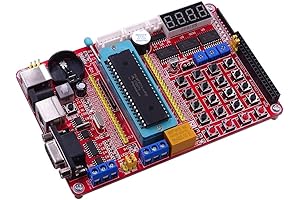
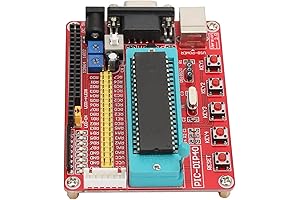

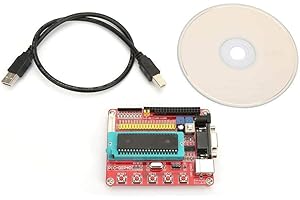
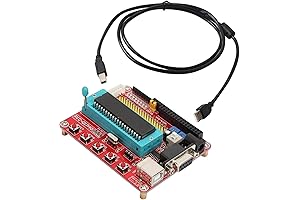
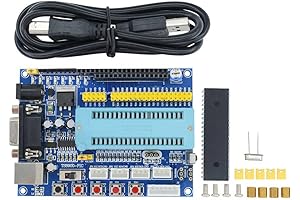
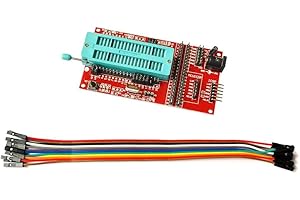
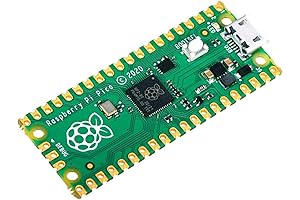
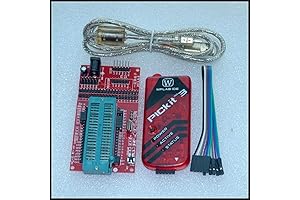
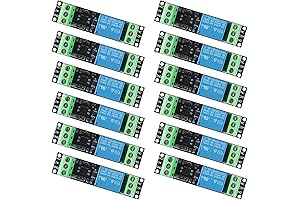
![Best Mouthpiece Brush 2024: Keep Your Instrument Clean and Sounding Great [Top 10 Picks]](https://m.media-amazon.com/images/I/619JROlnYCL.AC_SR500,386.jpg)


